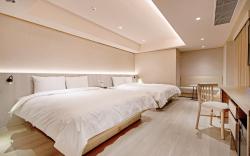Kaohsiung Cultural Center Introduction
Kaohsiung Cultural Center was established on April 16, 1981, and covers an outdoor green space of 7.055 hectares. It serves as a symbol of cultural development in Kaohsiung. The adjacent Guangzhou First Street is home to many galleries. The cultural center not only provides a recreational venue for the citizens of Kaohsiung but also enriches the artistic perspective of the port city’s inhabitants. It offers two performance halls, the Zhide Hall and the Zhishan Hall, seven exhibition halls, and a library among its cultural spaces. Surrounded by the "Civic Art Avenue," which is filled with humanistic atmosphere, it creates a unique space. The artistic seating on the sidewalks, steel sculptures, and mosaic pavement artworks have become models of "urban aesthetics." After the removal of the walls, the Kaohsiung Cultural Center transformed into an open space, allowing visitors strolling along the pedestrian paths to enjoy the comfort brought by the dense forests within the park. It is also a major venue for various cultural and artistic events in Kaohsiung. The main building's exterior wall, repainted in a calm and refined gray-white tone, adds a charming elegance to the cultural center. Surrounding the Civic Art Avenue are stone drums, Sunshine Station, steel sculptures, creative bus stops, and poetry walking paths that create a rich cultural atmosphere. The art market every Saturday and Sunday evening serves as a platform for street performers and creative works.



































